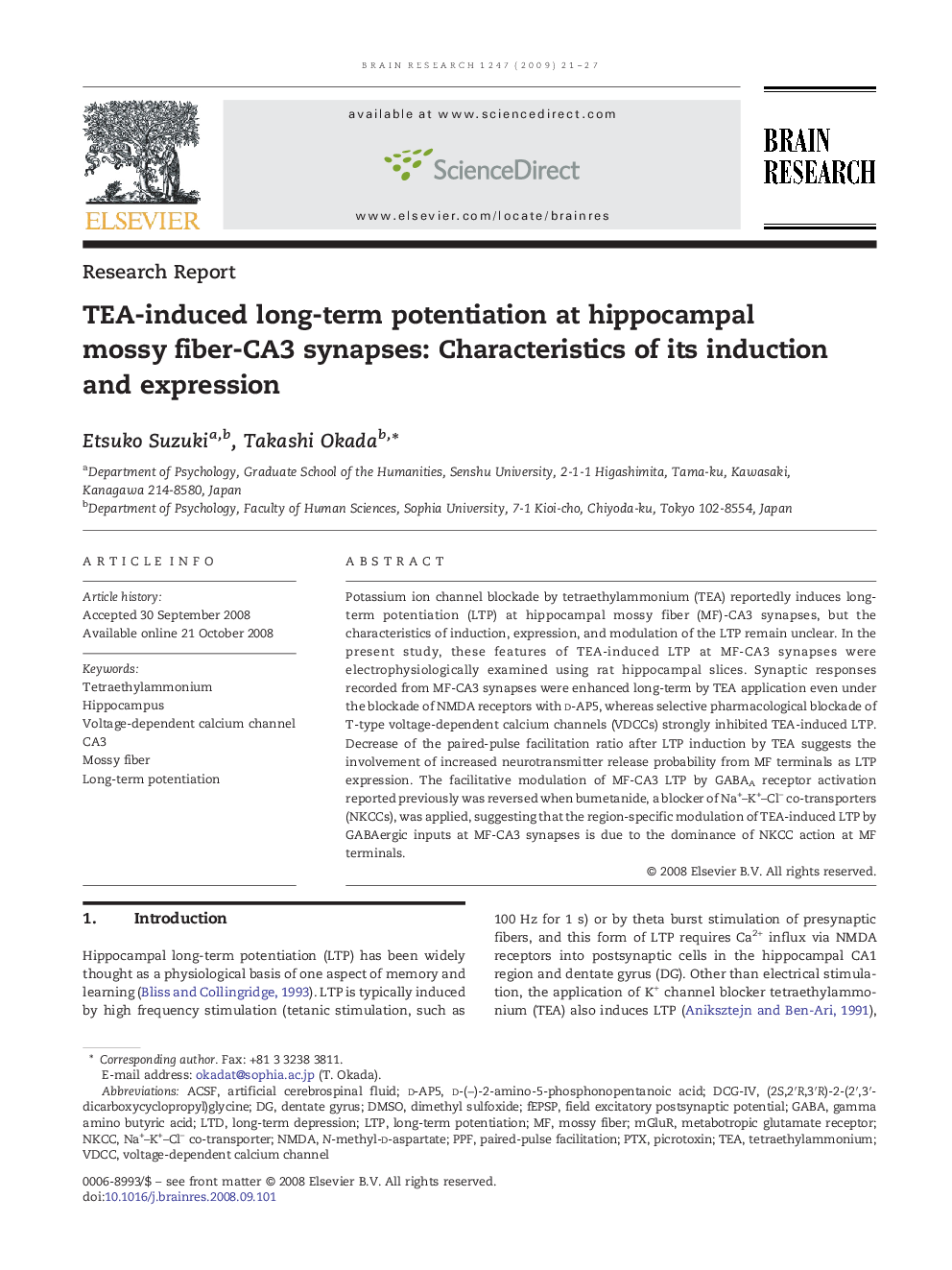| Article ID | Journal | Published Year | Pages | File Type |
|---|---|---|---|---|
| 6265658 | Brain Research | 2009 | 7 Pages |
Potassium ion channel blockade by tetraethylammonium (TEA) reportedly induces long-term potentiation (LTP) at hippocampal mossy fiber (MF)-CA3 synapses, but the characteristics of induction, expression, and modulation of the LTP remain unclear. In the present study, these features of TEA-induced LTP at MF-CA3 synapses were electrophysiologically examined using rat hippocampal slices. Synaptic responses recorded from MF-CA3 synapses were enhanced long-term by TEA application even under the blockade of NMDA receptors with d-AP5, whereas selective pharmacological blockade of T-type voltage-dependent calcium channels (VDCCs) strongly inhibited TEA-induced LTP. Decrease of the paired-pulse facilitation ratio after LTP induction by TEA suggests the involvement of increased neurotransmitter release probability from MF terminals as LTP expression. The facilitative modulation of MF-CA3 LTP by GABAA receptor activation reported previously was reversed when bumetanide, a blocker of Na+-K+-Clâ co-transporters (NKCCs), was applied, suggesting that the region-specific modulation of TEA-induced LTP by GABAergic inputs at MF-CA3 synapses is due to the dominance of NKCC action at MF terminals.
